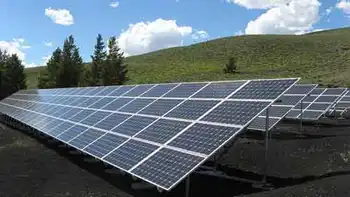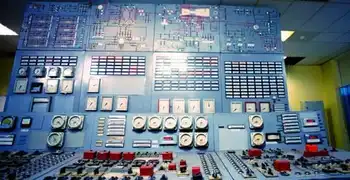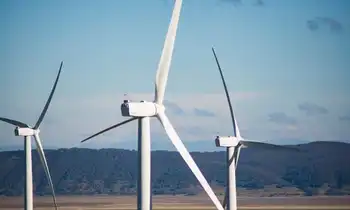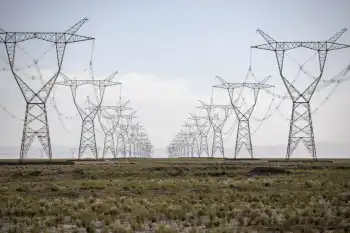Newfoundland touts historic power deal with Quebec
The two provinces have overcome their differences and worked out the first such arrangement since the long-standing dispute over the Churchill Falls development in the 1960s, which has repeatedly poisoned their relations.
Newfoundland and Labrador Premier Danny Williams announced that the province obtained access to the U.S. market under a five-year arrangement where Hydro-Quebec will receive $20-million a year to transport approximately 130 kilowatts of electricity from the 1969 Upper Churchill power project.
“This is truly a historic and momentous occasion for the people of our province, as never before have we been granted access through the province of Quebec with our own power,” Mr. Williams said.
“Today marks another significant milestone for us as people, as we continue on our path to self-reliance and long-term prosperity. This power sales arrangement puts us squarely in the game as a hydroelectricity producer and seller. We have clean, hydroelectric generation being sold from Newfoundland and Labrador and finding its way into the North American marketplace.”
According to the Newfoundland and Labrador government, Quebec had no choice but allow its neighbouring province access to the U.S. market.
“Quebec has historically never allowed us to wheel through the province,” said Elizabeth Mathews, a spokeswoman for Mr. Williams. “This was not a negotiation with Quebec. In fact this was… a regulatory process whereby our application for open access was successful.”
Quebec's Minister of Natural Resources, Claude Béchard, explained that Newfoundland and Labrador have finally come to the realization that it cannot seek federal funding to build a costly transmission line to bypass Quebec.
Quebec argued that if Newfoundland and Labrador wants to develop the Lower Churchill project they will need to play by the rules and use Quebec's transmission lines. But he said that once Quebec's 1,550-megawatt La Romaine project – to be built at a cost of $6-billion – is completed, there may not be room for Newfoundland and Labrador to export power on Hydro-Quebec's transmission lines.
Building another transmission line would be necessary and also very costly, ranging in the billions of dollars. But Mr. Béchard said nothing was excluded.
“Everything is possible as long as everyone plays by the rules of the game. Quebec is well positioned to become the next Alberta and respond to U.S. President Barack Obama's call for greener energy from the North. We don't want to stop others to get into the market.… As for other projects, our door is always open,” Mr. Béchard said.
The Quebec government denied that in exchange for access to its transmission lines, the Newfoundland and Labrador government dropped its threat of legal action over a border dispute that could have delayed the La Romaine project. Mr. Williams said in February that there was no border dispute. “For me it's a dead issue,” he told CBC news in February.
Nalcor Energy, through its subsidiary Newfoundland and Labrador Hydro, is selling power to a Canadian-based brokerage firm Emera Energy Inc., which began selling power to the United States. The power is derived from the province's share of the Upper Churchill project.
“This is a significant development for us to share our excess green renewable energy with the rest of North America through our transmission access through Quebec and our subsequent arrangement directly with Emera Energy,” the province's Minister of Natural Resources, Kathy Dunderdale, stated in a news release.
“These markets are seeking clean, reliable energy, which we have in abundance. The recall block availability and this arrangement allows us to build our reputation and experience as a reliable supplier of clean energy now and into the future.”
Mr. Williams said this was a first step toward further export of hydro power to the U.S. market, suggesting other arrangements with Hydro-Quebec may be in the works.
Related News
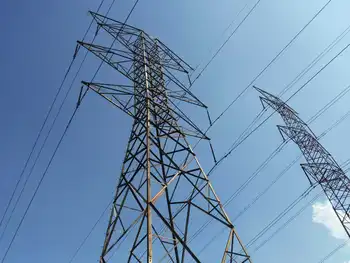
Canada expected to miss its 2035 clean electricity goals
OTTAWA - GlobalData’s latest report, ‘Canada Power Market Size and Trends by Installed Capacity, Generation, Transmission, Distribution and Technology, Regulations, Key Players and Forecast, 2022-2035’, discusses the power market structure of Canada and provides historical and forecast numbers for capacity, generation and consumption up to 2035. Detailed analysis of the country’s power market regulatory structure, competitive landscape and a list of major power plants are provided. The report also gives a snapshot of the power sector in the country on broad parameters of macroeconomics, supply security, generation infrastructure, transmission and distribution infrastructure, electricity import and export scenario, degree of competition,…


